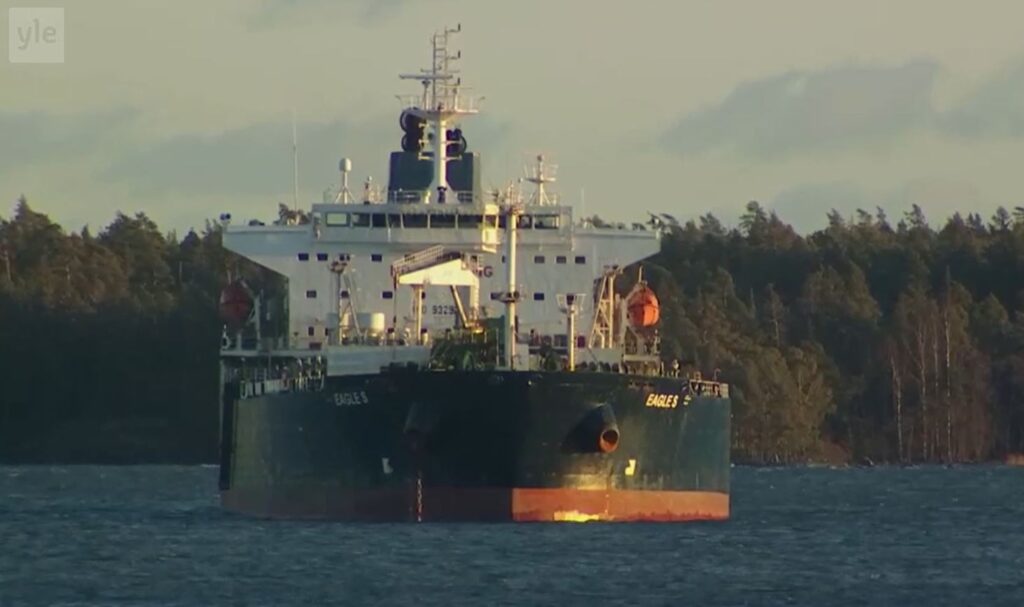A wave of covert explosions striking tankers tied to Russian energy exports appears to be the work of Ukrainian special forces, according to a detailed analysis by Tom Sharpe OBE in The Telegraph. While no official confirmation has been issued, the precision and pattern of the attacks strongly suggest a coordinated sabotage campaign.
“Someone – and bluntly, that someone is the Ukrainian special forces – is making highly effective use of these weapons,” Sharpe writes.
Sanctions, oil, and the shadow fleet
Following Russia’s 2022 invasion of Ukraine, the West imposed sweeping sanctions and a $60-per-barrel oil price cap to choke off funding for the war. In response, Moscow has leaned on a vast and opaque “shadow fleet” of aging tankers operating under obscure ownership and dubious flags of convenience. These vessels now carry more than 60% of Russia’s crude exports, helping sustain the oil revenues that fund Putin’s war.
Despite sanctions, the fleet continues to operate, with the US, EU, and UK stepping up enforcement through ship sanctions, port bans, and insurance crackdowns—efforts that so far have had limited effect.
Limpet mines: Targeted maritime sabotage
Military analysts and investigators believe the attacks were carried out using limpet mines, specifically Russian-made BPM-1 or BPM-2 models. These mines are designed to be manually attached to ship hulls by divers or delivered via unmanned underwater systems—tools of precision sabotage, not broad sea denial.
Their use indicates a high level of operational expertise, likely involving rebreather diving, manual or sonar-based navigation, and possibly mini-submersible delivery systems.

Sixth incident: Eco Wizard explosion in Ust-Luga
The most recent incident occurred on 6 July, when the Eco Wizard tanker was rocked by two explosions while loading ammonia at the Russian port of Ust-Luga. Though not a direct gas shipment, Sharpe notes that “ammonia is made of natural gas,” making it, in effect, a form of energy export.
This marks the sixth such attack this year. Previous explosions targeted tankers near Libya, Italy, Türkiye, and again in Ust-Luga. Many of the affected vessels had previously anchored near Malta and Libya—regions frequently linked to Russia’s shadow fleet operations.
Legal constraints and the grey zone at sea
Western powers have struggled to interdict the shadow fleet due to legal protections under the UN Convention on the Law of the Sea (UNCLOS), which enshrines freedom of navigation. Efforts to board or inspect suspect vessels under environmental or flag-related pretexts have had only limited success.
Sharpe also notes that many of these tankers are now accompanied by Russian warships or warplanes, raising the stakes and making direct intervention politically risky.

Strategic shift in maritime warfare
The suspected use of limpet mines by Ukrainian forces signals a strategic escalation in the maritime dimension of the war. These covert, deniable strikes target the infrastructure sustaining Russia’s war economy—without crossing into open confrontation.
As Sharpe concludes, this is a clear demonstration of “highly effective” unconventional warfare, exploiting vulnerabilities the West has yet to fully address.
Read also
-
Ukraine’s Intelligence: Explosion disables Russian shadow fleet tanker, carrying 1 million barrels of sanctioned oil
-
Frontline report: UK patrols cut off Russian shadow tankers at Baltic chokepoints – Putin’s oil billions at risk
-
Frontline report: Sweden to confront Russia’s shadow fleet in Baltic—100 Gripens on alert




